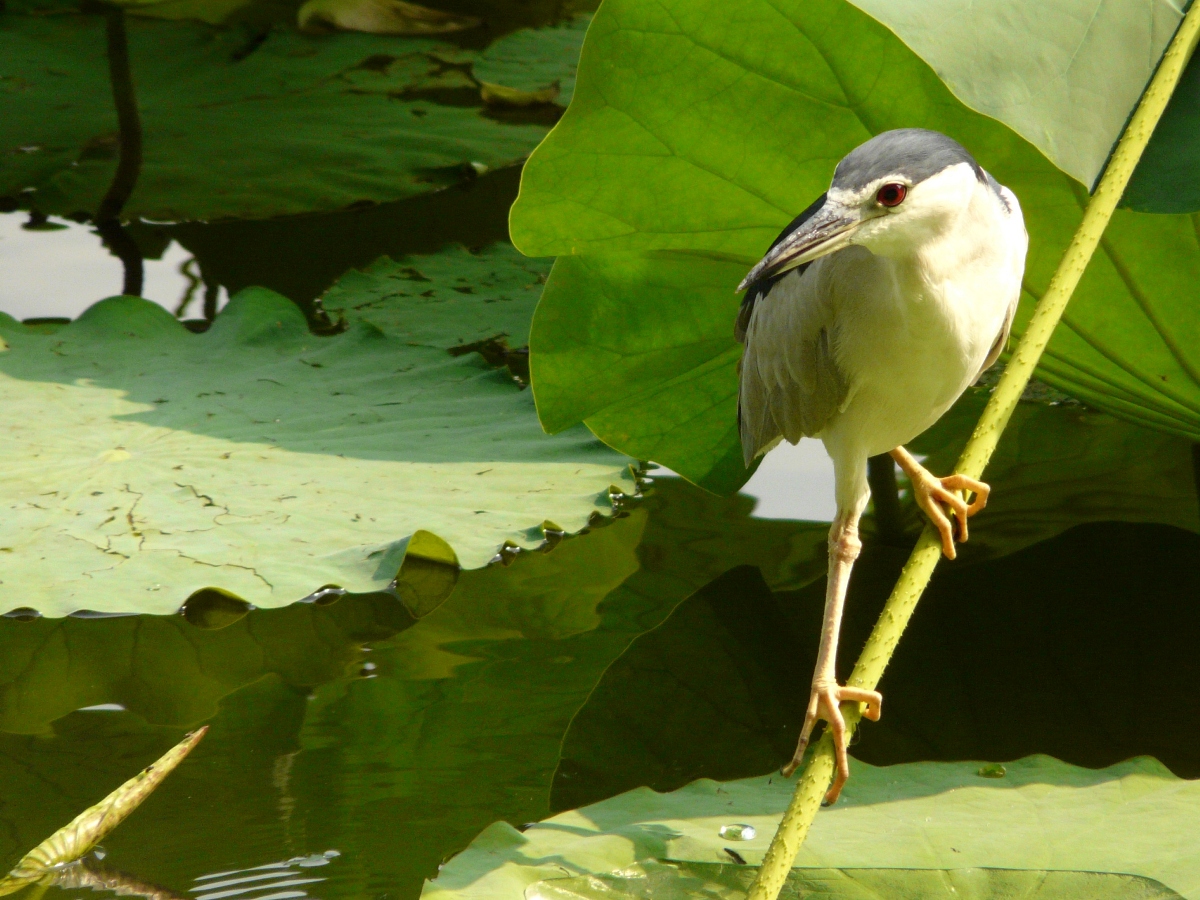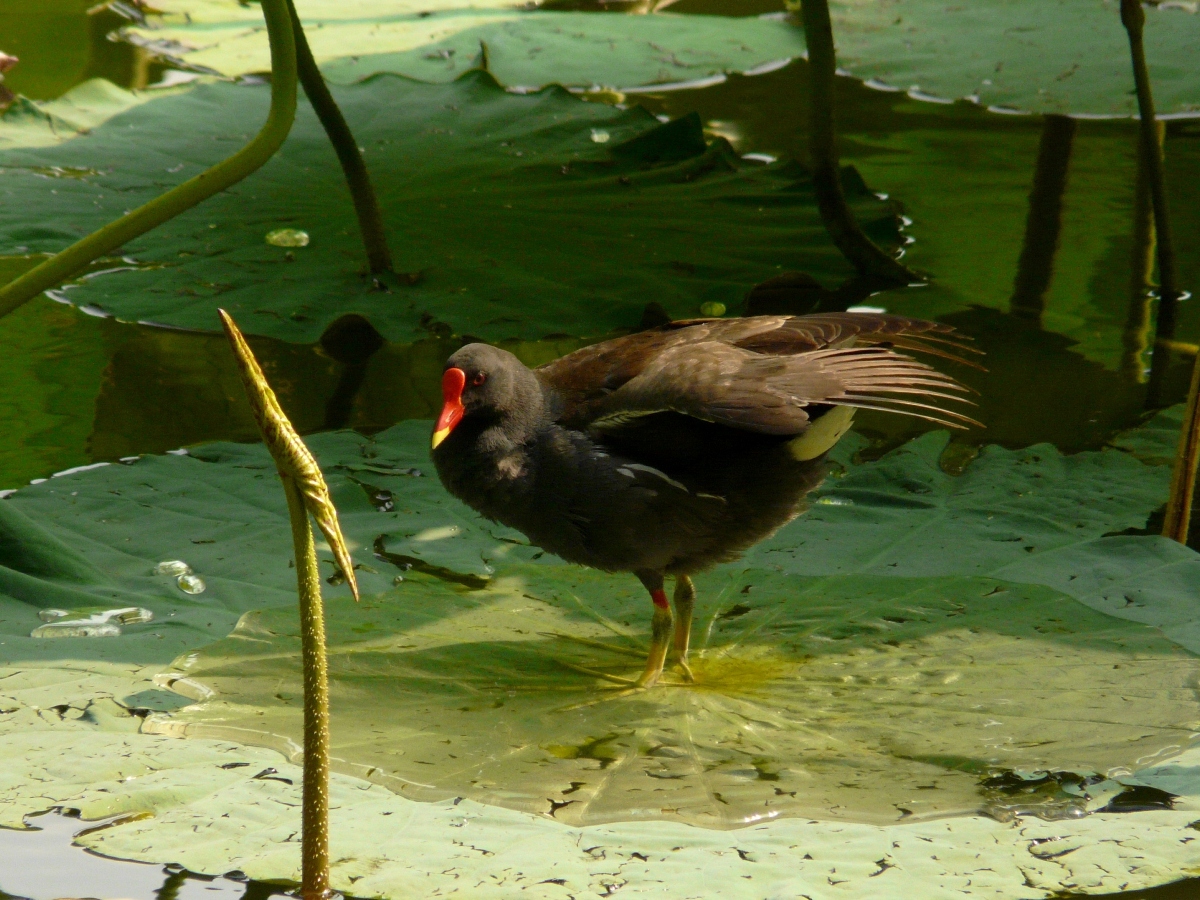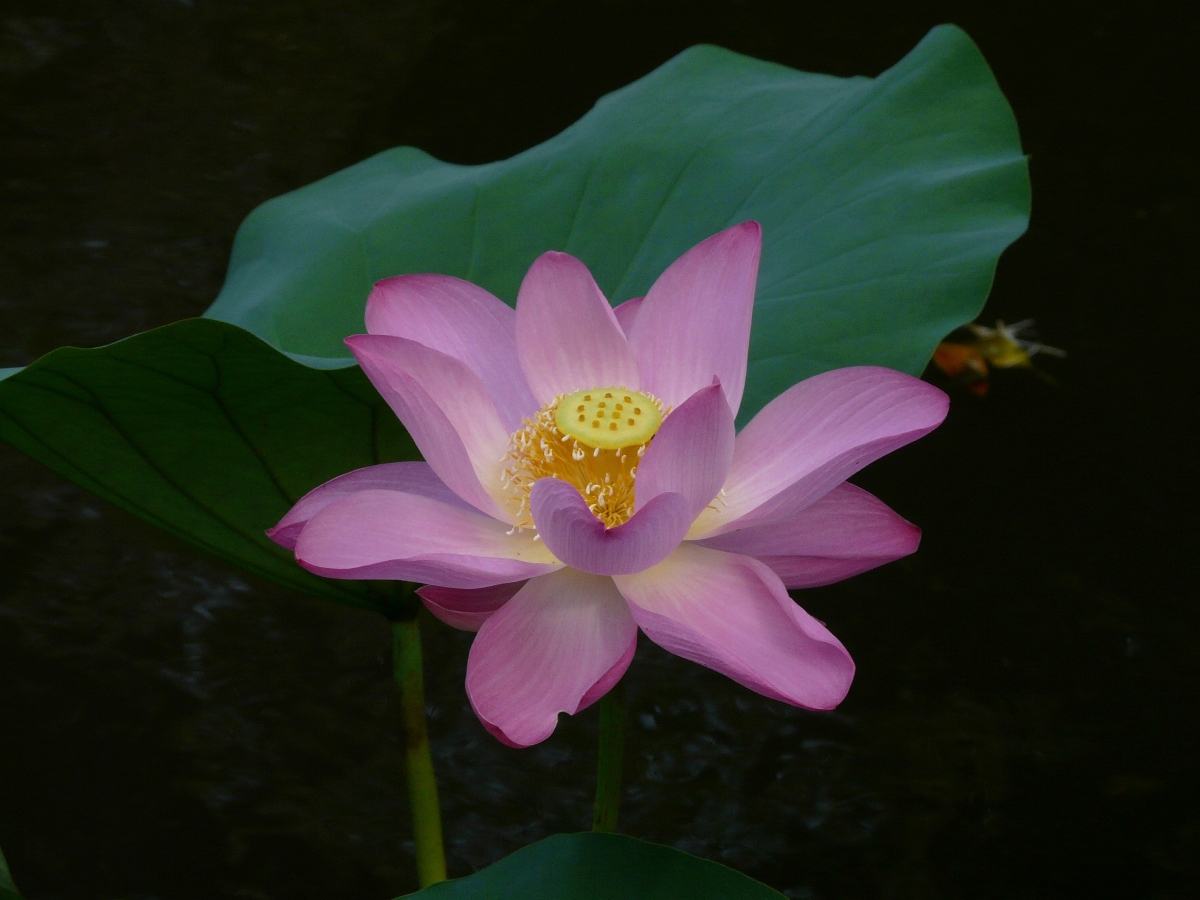 Black Drongo (Dicrurus macrocercus) in the brooding stage. I love its tail!
Black Drongo (Dicrurus macrocercus) in the brooding stage. I love its tail!Before arriving work early, I hang around the Lotus Pond in TBG and took some pretty nice photos.

Black-crowned Night Heron fighting for bread crumbs that tourists are throwing to feed the fishes in the pond.

Common Moorhen had to join in on the action as well.
Afterwards, I headed back to office to start working on my paper report. Most of my morning consisted of analyzing and describing photos of nestling developments. During lunchtime, I came outside again to check out a new nest site that my co-workers have been monitoring for a while now. The nest site is located adjacent from the TBG, so it is not actually inside the garden. Nevertheless, the data will be worth having since this is a new nest tree with a new pair so that we can have a complete set of data of this particular nest.
While I was there, the male adult came close to the female and mounted her! What horny birds, according to my colleagues, because this pair has sex quite often.
While I was there, the male adult came close to the female and mounted her! What horny birds, according to my colleagues, because this pair has sex quite often.
 Since I was just visiting I did not take part of the endoscopic observation. So I can finally photograph and show you how we do it.
Since I was just visiting I did not take part of the endoscopic observation. So I can finally photograph and show you how we do it. The above photo is the nest entrance. As you can see, the nest is again inside a Camphor tree on a sidewalk of a busy street (second strange living places of the day). The below left photo shows one person handling the extended pole with the endoscopic equipments attached to it while another has a small screen attached to the camera and takes photographs of the latest nest status [the photograph showed 3 eggs already]. So why copulating again? The below right phot shows the camera (and LCD lights) extending into the nest cavity to record the status. Isn't it fun? This nest is relatively close to the ground so using the pole is enough. But imagine a nest at least 10 meters above the ground. That's when it gets dangerous and tricky.
The above photo is the nest entrance. As you can see, the nest is again inside a Camphor tree on a sidewalk of a busy street (second strange living places of the day). The below left photo shows one person handling the extended pole with the endoscopic equipments attached to it while another has a small screen attached to the camera and takes photographs of the latest nest status [the photograph showed 3 eggs already]. So why copulating again? The below right phot shows the camera (and LCD lights) extending into the nest cavity to record the status. Isn't it fun? This nest is relatively close to the ground so using the pole is enough. But imagine a nest at least 10 meters above the ground. That's when it gets dangerous and tricky.

No comments:
Post a Comment